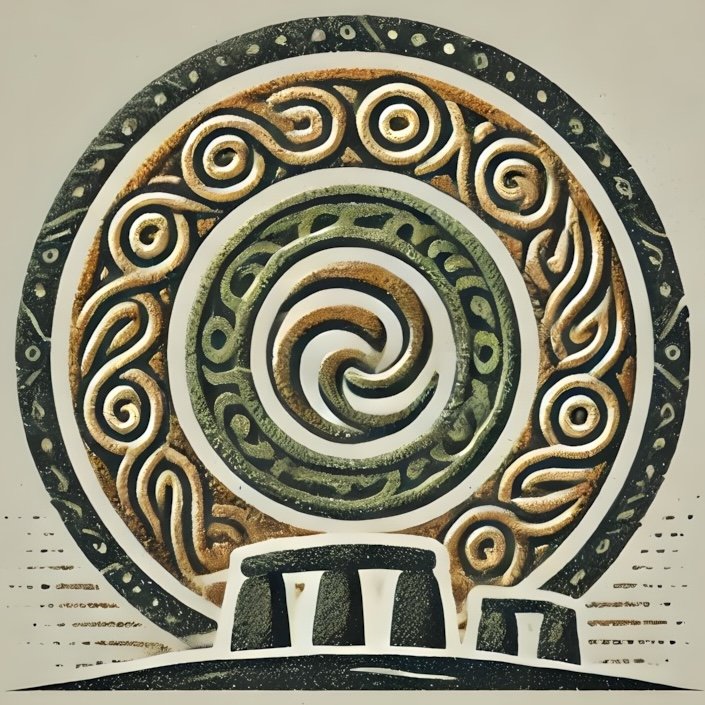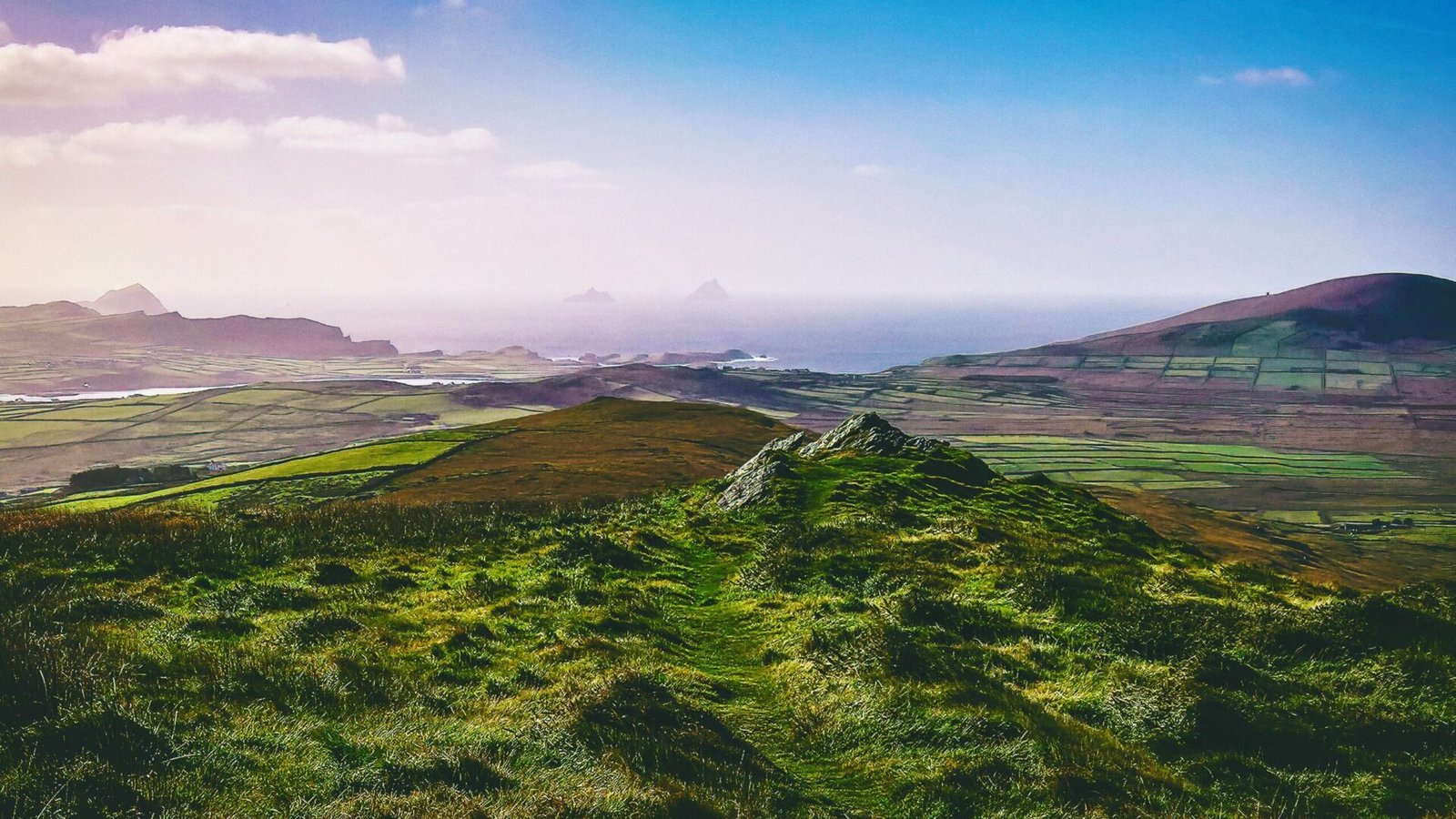The Irish landscape is a tapestry woven with threads of history, mythology, and culture. It is not merely a backdrop for human activity but a dynamic record of our past, encapsulating the stories of those who walked its hills and valleys long before us. The concept of landscape as history invites us to look beyond the surface, revealing layers of geological, archaeological, and cultural significance. In Ireland, every stone, hill, and river tells a story, making the landscape an essential element in understanding the rich tapestry of Irish prehistory.
Geological Foundations
To appreciate the historical significance of the Irish landscape, one must first understand its geological foundations. Ireland’s geology is a product of millions of years of natural processes, including volcanic activity, glaciation, and erosion. The island is characterized by its diverse geological formations, from the ancient limestone of the Burren to the basalt columns of the Giant’s Causeway.
These geological features not only shaped the physical landscape but also influenced human settlement and activity. For instance, the fertile soils of the River Shannon valley attracted early agricultural communities, while the rugged terrain of the west coast served as a natural barrier, influencing trade and interaction between groups. Understanding the geological context of the landscape provides a crucial backdrop for exploring the archaeological and historical narratives that unfold within it.
Archaeological Landscapes
Ireland is dotted with archaeological sites that serve as windows into its prehistoric past. From Neolithic passage tombs like Newgrange to the stone circles of the Bronze Age, these sites are integral to understanding the lives of our ancestors. The archaeological landscape of Ireland is not confined to isolated monuments; rather, it is a complex network of sites that interact with one another and with the natural environment.
The study of these archaeological landscapes reveals patterns of human behavior, social organization, and cultural practices. For example, the alignment of megalithic structures with celestial events indicates a sophisticated understanding of astronomy among prehistoric peoples. Visiting these sites allows us to engage with the past in a tangible way, fostering a deeper appreciation for the ingenuity and creativity of those who came before us.
Historical Land Use and Settlement Patterns
The historical land use and settlement patterns in Ireland reflect the evolving relationship between people and their environment. Evidence of early agricultural practices can be found in the form of field systems, enclosures, and ancient farmsteads. These remnants of human activity illustrate how communities adapted to their surroundings, utilizing the landscape’s resources for sustenance and shelter.
As societies developed, so too did their relationship with the land. The transition from a nomadic lifestyle to settled farming communities marked a significant shift in the use of the landscape. The establishment of permanent settlements led to the construction of monumental structures, trade routes, and social hierarchies. Understanding these patterns helps us appreciate the complexities of human interaction with the landscape over time.
Mythological Connections to the Landscape
Irish mythology is deeply intertwined with the landscape, imbuing physical features with stories and symbolism. Many mountains, rivers, and ancient sites are associated with legendary figures and events, creating a rich tapestry of mythological narratives that continue to resonate today. For example, the River Boyne is linked to the goddess Brigid, while the Hill of Tara is steeped in tales of kings and heroes.
These mythological connections enrich our understanding of the landscape, providing insight into how prehistoric peoples perceived their world. The stories associated with specific locations often served to reinforce social norms, cultural identity, and communal memory. Exploring these myths allows us to see the landscape not just as a physical space but as a living narrative that has shaped the Irish psyche over millennia.
Cultural Memory and Oral Traditions
Cultural memory and oral traditions play a vital role in preserving the historical significance of the Irish landscape. For centuries, stories, songs, and folklore have been passed down through generations, connecting people to their ancestral roots and the land they inhabit. These oral traditions often reflect the values, beliefs, and experiences of communities, providing a lens through which to view the past.
The landscape itself serves as a canvas for these stories, with specific locations becoming focal points for cultural memory. Sites like the Hill of Uisneach, believed to be the center of Ireland, are steeped in legend and continue to be celebrated in contemporary culture. Engaging with these oral traditions allows us to appreciate the continuity of human experience and the enduring connection between people and place.
The Impact of Modern Development
While the Irish landscape is a repository of historical and cultural significance, it is also subject to the pressures of modern development. Urbanization, agriculture, and infrastructure projects have transformed the landscape, often leading to the loss of archaeological sites and traditional practices. As we navigate the challenges of modernization, it is crucial to balance development with the preservation of our historical heritage.
Efforts to protect and promote the historical landscape are ongoing, with initiatives aimed at raising awareness and fostering sustainable practices. Organizations dedicated to heritage conservation work tirelessly to ensure that future generations can continue to explore and learn from the rich tapestry of Irish prehistory.
Visiting the Landscape: Key Sites and Itineraries
For those eager to explore the historical landscape of Ireland, a wealth of key sites and itineraries await. Here are some must-visit locations that encapsulate the essence of Irish prehistory:
1. Newgrange: This Neolithic passage tomb, older than Stonehenge, is renowned for its winter solstice alignment. Visitors can experience the awe of standing within this ancient structure, surrounded by the whispers of history.
2. The Hill of Tara: Once the seat of the High Kings of Ireland, Tara is steeped in myth and history. Its ancient monuments and breathtaking views make it a significant cultural landmark.
3. The Burren: This unique limestone landscape is home to a wealth of archaeological sites, including ancient forts and burial grounds. The Burren’s rich biodiversity and stunning scenery further enhance its allure.
4. Giant’s Causeway: A UNESCO World Heritage Site, this geological wonder is steeped in myth and legend. The hexagonal basalt columns are a testament to the power of nature and the stories that shape our understanding of the landscape.
5. The Dingle Peninsula: This region is rich in archaeological sites, including beehive huts and early Christian churches. The stunning coastal scenery and vibrant culture make it a perfect destination for those seeking to connect with Ireland’s past.
6. Loughcrew: A complex of Neolithic passage tombs, Loughcrew offers breathtaking views and a deep sense of history. The alignment of the tombs with the rising sun during equinoxes adds a mystical element to the site.
By visiting these key sites, individuals can engage with the landscape as a living historical record, fostering a deeper connection to Ireland’s rich heritage.
The Landscape as a Dynamic Historical Record
The Irish landscape is far more than a mere backdrop; it is a dynamic historical record that invites exploration and reflection. Through its geological foundations, archaeological landscapes, mythological connections, and cultural memory, the landscape tells the story of a people deeply intertwined with their environment. As we navigate the complexities of modern development, it is essential to recognize the value of preserving this historical tapestry for future generations.
In Ireland, the landscape is alive with stories waiting to be discovered. Whether through the lens of archaeology, mythology, or cultural memory, each visit to the Irish landscape offers a unique opportunity to engage with the past and understand the intricate relationship between people and place. As we walk the hills, valleys, and coastlines of this beautiful island, we become part of a continuing narrative that transcends time, connecting us to those who came before and shaping the stories of those who will follow.

